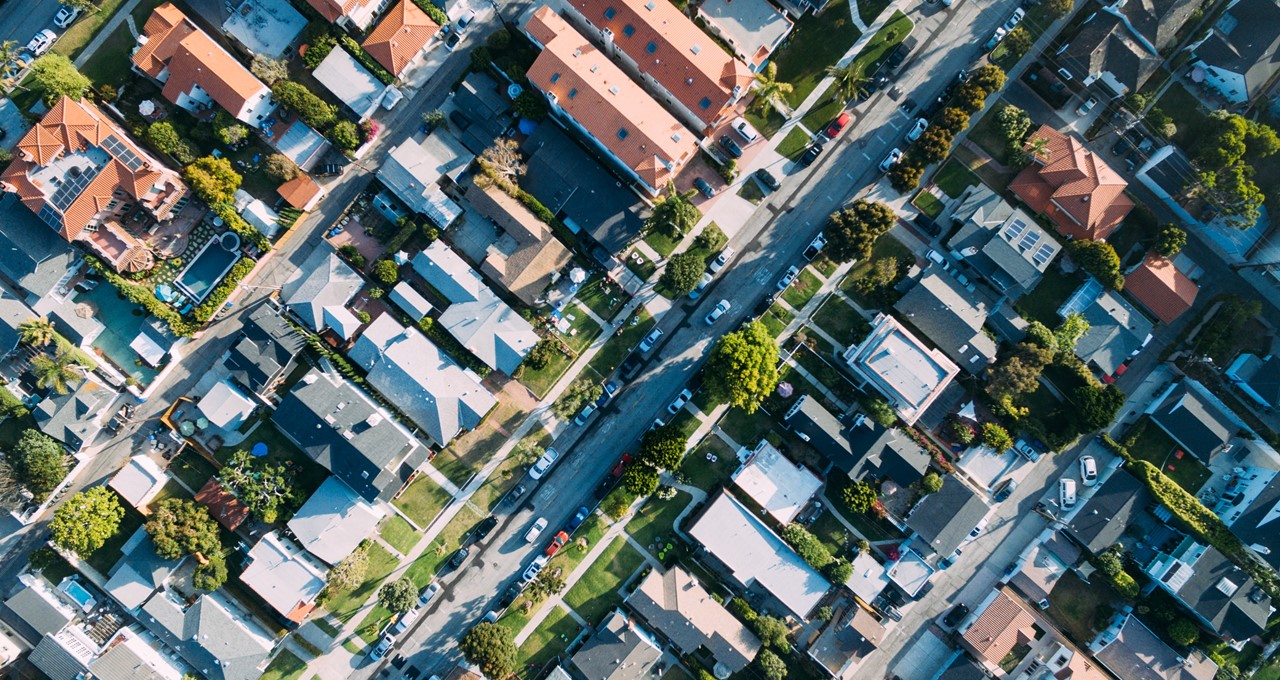Every day, vast amounts of geospatial imagery are being collected, and yet, until recently, one of the biggest potential users of that trove — property insurers — had made surprisingly little use of it.
Now, CAPE Analytics, a computer vision startup and NVIDIA Inception member, seeks to turn that trove of geospatial imagery into better underwriting decisions, and is applying these insights to mitigate wildfire disasters.
Traditionally, the insurance industry could only rely on historic data for broad swaths of land, combined with an in-person visit. CAPE Analytics can use AI to produce detailed data on the vegetation density, roof material and proximity to surrounding structures. This provides a better way to calculate risk, as well as an avenue to help homeowners take actions to cut it.
“For the first time, insurers can quantify defensible space- the removal of flammable material, such as vegetation from around a home- with granular analytics,” said Kevin Van Leer, director of Customer Success at CAPE Analytics. “CAPE allows insurance carriers to identify the vulnerability of a specific home and make recommendations to the homeowner. For example, our recent study shows that cutting back vegetation in the 10 feet surrounding a home is the most impactful action a homeowner can take to reduce their wildfire risk. It’s also much easier to achieve in comparison to the frequently recommended 30-to-100 foot buffer.”
As fire seasons grow longer and deadlier each year, and wildfires are driven by hotter, drier, and faster winds, the risk area widens into newer areas, not found on older maps. This makes up-to-date insights especially crucial.
“What’s unique about this dataset is that it’s very recent, and it’s high resolution,” said Kavan Farzaneh, head of marketing at the Mountain View, Calif., based company. “Using AI, we can analyze it at scale.”
Insights from such analysis extend beyond weather risk to “blue sky,” or day-to-day risk, as well. Whether that means determining the condition of a roof, factoring in new solar panels or detecting the presence of a trampoline, CAPE’s software seeks to optimize the underwriting process by helping insurers make more informed decisions about what policies to write.
And given that the six-year-old company already boasts more than 40 insurance industry customers and is backed by investments from several large insurance carriers, including the Hartford, State Farm and CSAA, CAPE Analytics appears to be on to something.
Creating More Accurate Records
For some time, insurance companies have used aerial imagery for claims verification, such as reviewing storm damage. But CAPE Analytics is converting that imagery into structured data that underwriters can use to streamline their decision-making process. The company is essentially creating more up-to-date property records, which traditionally come from tax assessor offices and other public records sources.
“We zeroed in on property underwriting because there was a void in accuracy, and data tends to be old,” said Busy Cummings, chief revenue officer at CAPE Analytics. “By using AI to tap into this objective ‘source of truth,’ we can improve the accuracy of existing data sources.”
And that means more efficiency for underwriters, who can avoid unnecessary inspections altogether thanks to having access to more current and complete data.
CAPE Analytics obtains its datasets from multiple imagery partners. Human labelers tag some of the data, and the company has trained algorithms that can then identify elements of an aerial image, such as whether a roof is flat or has gables, whether additional structures have been added, or if trees and brush are overgrowing the structure.
The company started training its models on several NVIDIA GPU-powered servers. It has since transitioned the bulk of its training activities to Amazon Web Services P3 instances running NVIDIA V100 Tensor Core GPUs.
Inferencing is running on the NVIDIA Triton inferencing server. CAPE Analytics relies on multiple Triton instances to run its models, with a load balancer distributing inferencing requests, allowing it to scale horizontally to meet shifting client demand. The company’s infrastructure makes it possible to do live inferencing of imagery, with geospatial data converted into actionable structured data in two seconds.
In Pursuit of Scale
Thanks to its membership in NVIDIA Inception, the company has recently been experimenting with the NVIDIA DGX A100 AI system to train larger networks on larger datasets. Jason Erickson, director of platform engineering at CAPE Analytics, said the experience with the DGX A100 has shown “what we could potentially achieve if we had unlimited resources.”
“We’ve been very fortunate to be a part of NVIDIA’s Inception program since 2017, which has afforded us opportunities to test new NVIDIA offerings, including data science GPU and DGX A100 systems, while engaging with the wider NVIDIA community,” said Farzaneh.
CAPE Analytics has every motivation to pursue more scale. Cummings said it has spent the past year focused on expanding from insurance underwriting into the real estate and mortgage markets, where there is demand to integrate property condition data into the tools that determine home values. The company also just announced it’s powering a new automated valuation model based on geospatial data.
With so many potential markets to explore, CAPE Analytics has to keep pushing the envelope.
“Machine learning is such a fast-moving world. Every day there are new papers and new methods and new models,” said Farzaneh. “We’re just trying to stay on the bleeding edge.”
Learn more about NVIDIA’s work with the financial services industry.
Feature image credit: Paul Hanaoka on Unsplash.
